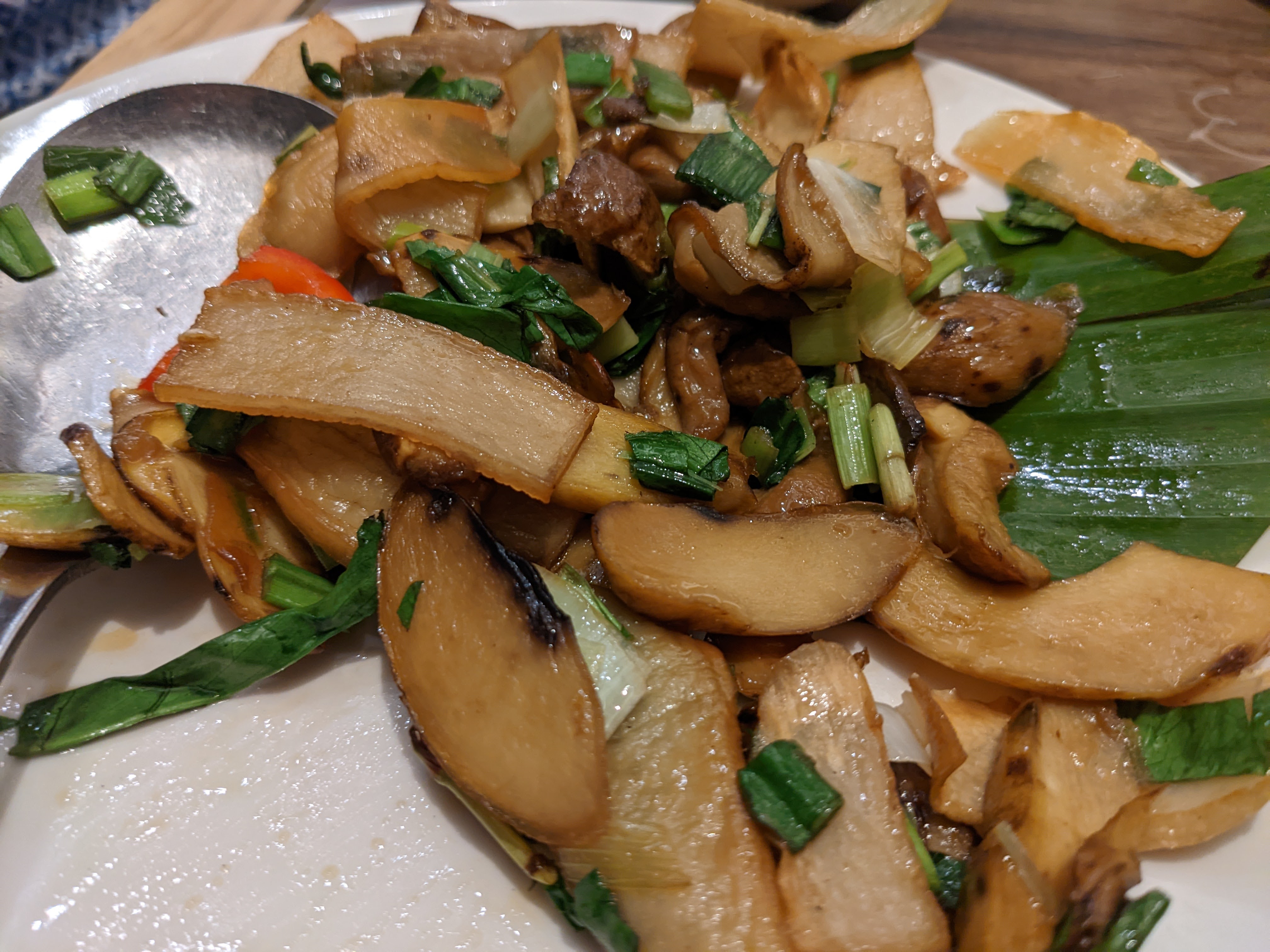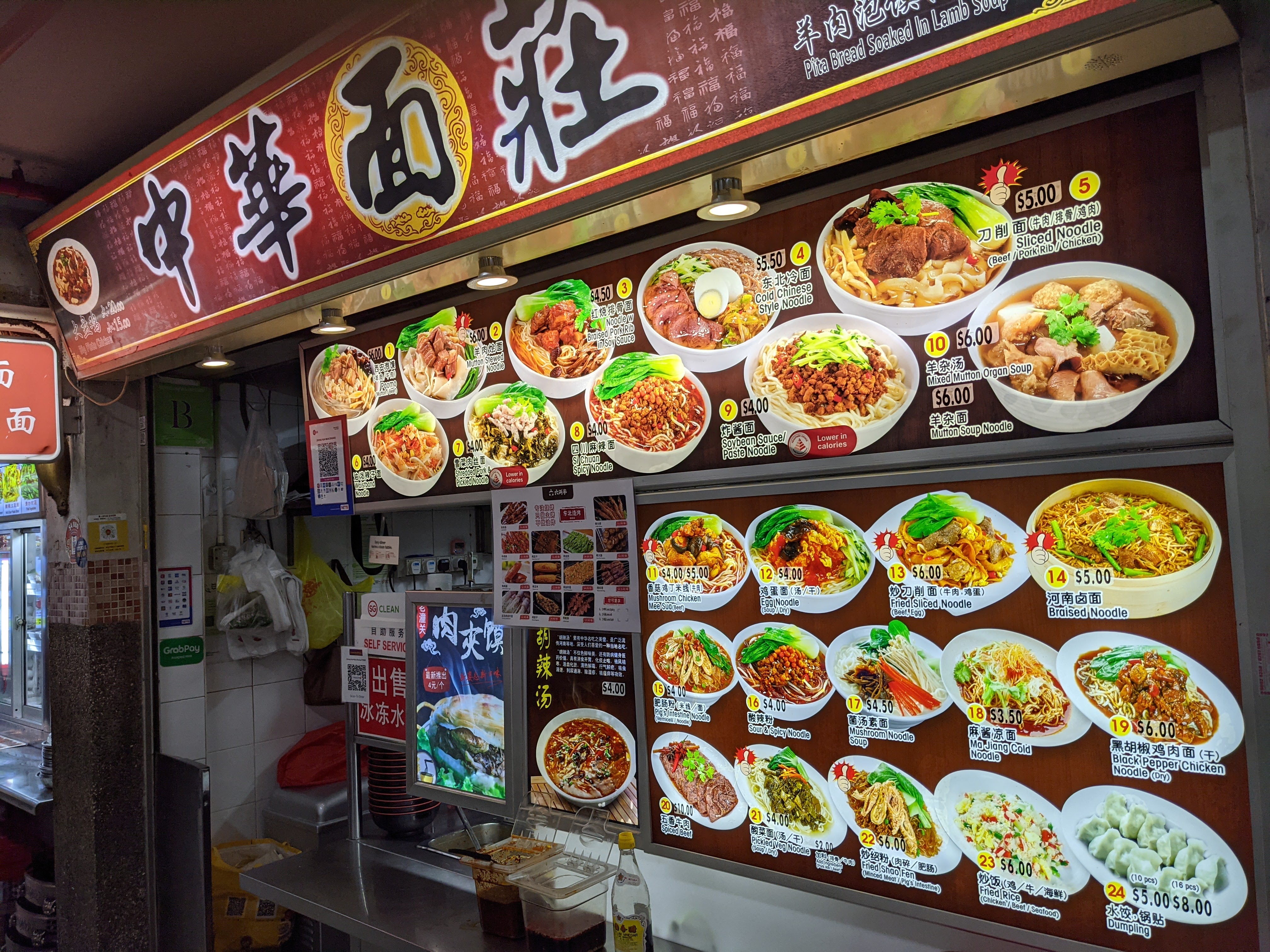Yunnan, “South of the Clouds”, is the closest China gets to Southeast Asia in both culture and cuisine. 25 of China’s official 58 minority groups can be found here, many of them merrily straddling the border, with groups like the Miao (Hmong), Hani (Akha), Lisu and Tai also found in Laos, Thailand, Cambodia and Myanmar.



I’ve never had to chance to visit Yunnan proper, but I have been just on the other side of the border a couple of times, sampling Tai Dam cuisine in Luang Namtha, Laos and trekking with Lisu hill tribes in Chiang Dao National Park, Thailand. The most interesting almost-Yunnan trip, though, was a visit to Mae Salong, founded in northern Thailand by Yunnanese remnants of the Chinese Nationalist (Kuomintang) Army fleeing across the border to escape the Communists in the 1950s. Being in the notorious Golden Triangle, for decades they made a living in the opium trade working with equally notorious Burmese warlord Khun Sa, but in the eighties they laid down their poppies and AK-47s and switched to cultivating oolong tea and backpackers, with a sideline in Yunnanese noodles.
Given the variety of people living there, Yunnanese cuisine (滇菜 Diān cài) defies easy categorization, but the province is best known for slippery mĭxiàn (米线) rice noodles, the liberal use of chillies, a vast array of mushrooms, and pǔ’ěr (普洱) tea, a type of fermented, aged tea with a funky, earthy scent and taste.



I kicked off my exploration of Yunnan at the eponymous Yun Nans (云海肴 Yúnhǎiyáo, “Sea of Clouds Dishes”), a large Chinese chain with three Singapore outlets. The chain was actually founded by a bunch of Beijing hipsters in 2009, who in 2017 moved their HQ to Yunnan’s capital Kunming and opened a couple of outlets there to maximise their street cred. Only when writing this entry did I connect the dots, since it turns out the Yunnanese meal I’d eaten at a hip eatery in Beijing’s tarted up hutong district of Shichahai back in 2018 was an outlet of the same chain!



I actually visited twice: once during COVID, when we ordered a Signature Set (云南精选) for delivery, and once in person at the Westgate outlet for a large conference dinner. The conference food was preordered, but the starter Lychee Prawn Balls (荔枝虾球) were perhaps the most striking-looking Chinese dish I’ve seen, looking exactly like giant raspberries complete with a sprig of mint for camouflage — although on the inside it was just a large, slightly sweet deep-fried prawn. The Braised Wild Porcini Mushrooms (包烧牛肝菌) were also delicious, this could have been straight out of a Finnish forest!



For the delivery set, First up was Poached Pork Collar with Pickled Chillies (腌菜松板肉), easily the most unusual dish of the lot: somewhere between a soup, a curry and a bowl of noodles, the flavour of the striking orange broth was complex but primarily sour thanks to the pickles, with a sharp chilli note and a few Sichuan peppers for that extra zing. Under the soft sliced pork lurked a few crinkle-cut potatoes, slices of an unidentifiable gourd and some slippery glass noodles. Everybody’s favorite, though, was the Crispy Duck with Dried Chillies (香酥鸭), Yunnan’s take on the Sichuan classic dried chilli chicken laziji, which looks murderously spicy but actually isn’t, with battered and deep-fried slivers of duck jostling with shredded dry chillies, some onions and a whole lotta garlic.



The most unusual ingredient of the day was in the Sauteed Asparagus with Golden Fungus and Mushrooms (金耳花菇炒芦笋), where the “Golden Fungus” is Tremella aurantialba, a jelly fungus so obscure it doesn’t even have a picture on Wikipedia. Called golden ear (金耳 jīn’ěr) in Chinese, it’s a relative of the much more common snow fungus aka silver ear (银耳 yín’ěr). But whereas the snow fungus is thin, crunchy and ethereal, this looks disturbingly brain-like, has a spongy texture and tastes like nothing much. The still crispy asparagus was nice though. To wash it all down we had a bowl of Steampot Chicken Soup (汽锅鸡), apparently the chain’s signature dish and a Yunnanese classic but, I’m sorry to say, quite indistinguishable from the herbal chicken soup sold at your neighbourhood hawker centre, a few bony chunks of chicken in nondescript sweetish soup with a token wolfberry for colour. For dessert we had some Corn Cakes (玉米粑粑 yùmǐ bābā), supposedly a type of Naxi baba bread, which looked and tasted like sweet pancakes with corn chowder added to the batter. All in all, even making allowances for delivery, it was a pretty mixed bag at best.

The most famous Yunnanese dish, though, is crossing the bridge noodles (过桥米线 guòqiáo mĭxiàn), which come with a lovely if implausible story of a wife making soup for her husband studying on a little island. She brought the ingredients across separately to keep them warm, mixed the ingredients on arrival, and ta-dah, the soup was born, despite the anguished cries of physics students noting that maximising surface area will increase heat loss, not decrease it. Honguo (红锅 Hóngguō, “Red Pot”) is one of several small chains specialising in this in Singapore, and I tried out the Signature 12-Item Soup ($10.20) at their Bugis Junction outlet. The presentation is striking, and the Pot is indeed Red, but the taste was a little anticlimactic, the ingredients a frankly odd mishmash of pork, fish, shrimp etc and the chicken soup rather nondescript, salty and, fatally, only lukewarm. Not very impressed.



Undeterred, I crossed the bridge again at the wonderfully named Mademoiselle Tang Noodle (唐大小姐 Táng dàxiǎojiě), a hip little joint in Novena, packed at lunchtime on a random Friday. Here the menu also promises a DIY bento-box experience for the soup, but it actually came premixed. What you lose in the presentation is more than made up for in taste though, this was much tastier and $12.90 gets you a couple of generously sized prawns as well. Two thumbs up from my wife.



There are a couple of other interesting Yunnanese dishes on the menu, and after some deliberation I landed on the Rattan Pepper Chicken Rice Noodle (藤椒鸡米线 téngjiāo jī mǐxiàn), despite being warned no less than three times that “It’s spicy! Very spicy!” Rattan pepper here refers to Zanthoxylum armatum, known as green Sichuan pepper (麻椒 májiāo) in its typical dried spice form, but in Yunnan the fresh pods, téngjiāo (藤椒), are eaten as is. The pods look like tiny capers and have very little taste, but they crack open with a crunch and release a pop of the numbing má (麻) sensation Sichuan cuisine is famous for. And you’ll need all the numbing you can get, since those innocuous reddish-orange bits in the soup are fresh bird’s eye chillis aka chilli padi, the tiny little torpedoes of pain that spice up authentic Thai food. The spice was not completely overwhelming though, and the chicken, garlic chives, bean sprouts and other bits in the soup stood up to the pounding. Afterwards, I could still feel the slow burn in my stomach and a nice endorphin high kicked in, the way it used to when eating Thai food in Bangkok with my Thai colleagues. Ah, nostalgia. A final Middle Eastern exclamation mark was added by the Flower Cake (鲜花饼 xiānhuā bǐng), crumbly biscuits flavoured with a sweet, fragrant paste of glutinous rice and dark purple rose syrup, reminiscent of Turkish delight (lokum).
All in all, Mademoiselle Tang was easily my favourite of the three places we sampled, and I’m looking forward to visiting again. The Specialty Chicken Rice (瓦香鸡饭 Wǎxiāng jīfàn), apparently a classic Naxi dish, looks particularly intriguing — but we’ll cross that bridge when we get to it.

























